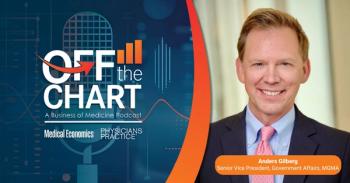
The Government's Not-So-Secret Takeover of Healthcare
Medicare and Medicaid reimbursements have dropped to levels resembling a healthcare takeover. Why takeover, if it costs the same to get somebody else to do it?
The shop-worn metaphor of a frog in boiling water appeared frequently in the 1950s to justify capitalism’s "red scare" paranoia. While I personally deplore the practice of attaching labels (it only encourages name-calling,) there are times when I must simply scratch my head and say, "well, I’ll be darned." This often occurs when I realize something which sounded crazy, actually wasn’t too far off the mark. The metaphor holds that a frog placed in boiling water will jump out, while a frog placed in cold water gradually heated to boiling, won’t notice the subtle change, until he is cooked.
In 1965, when Congress debated the passage of Medicare and Medicaid, the AMA warned of "socialist" medicine and the eventual government takeover of the free-enterprise system which led to the greatest healthcare delivery system in the world. In 1961, the AMA even hired Ronald Reagan to record a 10-minute phonograph entitled
In 1965, if the AMA hadn’t objected, government could have nationalized Medicare and Medicaid as a government-operated program, similar to the U.S. Department of Veterans Affairs (VA). The VA is the nation's largest integrated healthcare system, with a reported $150 billion budget, more than 1,700 hospitals, 280,000 employees, clinics, community living centers, domiciliaries, readjustment counseling centers, and other facilities.
Hypothetically, had the government delivered Medicare and Medicaid directly to the elderly and disabled, the budgeted costs could have been plotted on a pie chart. There would be a place on the chart for the actual cost of the buildings which house the clinics or hospitals, utilities, supplies, a portion for the modest salaries of doctors, physician’s assistants, nurses and staff. What would not be on the chart is any slice for "profit." In other words, the government would pay only the actual "cost" of the delivery of Medicare and Medicaid services.
But the AMA did object. The government chose not to attempt to own and operate hospitals and clinics which provide Medicare and Medicaid. Instead, securing the necessary support and votes for passage forced Congress to promise two things: 1.) to pay 80 percent of the usual and customary fee (including profits) for services; and 2.) the government must "stay out of the examining room." As a result,
Things went really, really well for doctors and hospitals through the 1980s. So much so, the AMA and its "pro-capitalistic" stance seemed to belong to another time. Membership
Eventually, Medicare and Medicaid reimbursements have dropped to levels which resemble what we might expect to see if the government had taken over the delivery of healthcare. Why takeover, if it costs the same to get somebody else to do it? Unlike true socialism, the government isn’t seeking to own the buildings, nor employ the staff directly. The goal isn’t to take over healthcare. The goal seems to be to pay the same "costs," as if the government actually had taken over. The promise of "non-interference" under 42 U.S.C. 1395, likewise has given way to RAC audits and "fraud, waste, and abuse" prosecutions (which can frequently be defined as "failing to do what the government tells you").
This news should nevertheless be fairly good, for a simple reason. Even if the government pays only enough to break even, the overhead is nevertheless paid. Physicians should have all they need toward earning a profit from everyone else. It’s called "cost-shifting," and this is the justification for asking physicians to work for "cost." The government pays your basic overhead and you ignore you are working for free, because you can still earn a free-market profit from everyone else.
Two problems arise, however: 1.) we are running out of "other people" who can afford to pay anything close to cost, plus a profit - private insurers are following the government’s lead, which jeopardizes the whole system; and 2.) physicians are spending so much time jumping through insurance reimbursement hoops, no one has time or energy to develop a practice.
Increasingly, the "frog in a pan" metaphor appears to be a valid one. It didn’t happen all at once, but sadly, the end result seems to be the same. As the Soviet model revealed, when physicians are made to realize "it doesn’t matter" how hard they work, or how many patients they see, a kind of "darkness" falls. It may be a long time before we all see daylight.
Newsletter
Optimize your practice with the Physicians Practice newsletter, offering management pearls, leadership tips, and business strategies tailored for practice administrators and physicians of any specialty.









